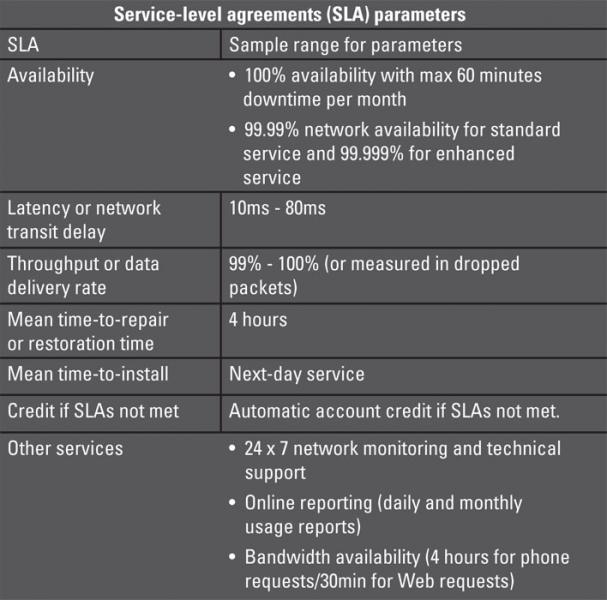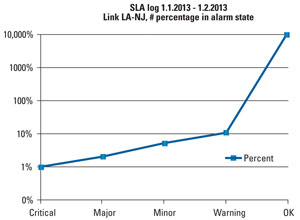IP networking: Soon mandatory to being able to compete?
Classic fears of IP for contribution-level broadcasting — including lack of control, end-to-end quality and security concerns — are slowly being overcome. Why? The advantages far outweigh the risks, given recent technology advancements, coupled with the revenue potential of implementing technology that can transport video and other media content in real time within the same network.
In fact, IP infrastructures may soon be essential to stay competitive in a future defined by consumers of content, not the content itself. Consumers are demanding content on the go, seamlessly in step with the way they live their lives — anywhere, any time, and looking as good on the small screen as the one in the living room. IP is already being used extensively for distributing content to the range of available devices in the secondary distribution realm, as shown in Figure 1. It’s time to see why IP is ideally suited to transporting content in the primary distribution space.

Figure 1. IP is becoming the common standard for media transport for backhaul, distribution and SMPTE 310 studio-transmitter links.
Any-to-any connections
IP requires managing connections, scaling bandwidth, implementing smartly engineered management tools, and a lot in between. But it doesn’t have to be daunting. It’s important to keep the end goals in mind — more efficiency, both in terms of resources and hard costs (read: lower CAPEX and OPEX); economies of scale; and increased network capacity. On the broadest scale, the key to IP technology is the any-to-any connectivity it provides. From a single interface, it allows operators to securely transport video signals to one or more receivers in the network. Think of IP as one big virtual video router that spans the globe and runs on IP instead of traditional equipment.
But IP isn’t suited just for the big scale. A considerable share of IP solutions in the professional video realm consist of simple networks such as studio-to-transmitter links. The technology allows easy and reliable connections, and when combined with Ethernet, is a universal solution for small systems to large, complex networks.
Bandwidth savings — challenges
The professional video industry's #1 source for news, trends and product and tech information. Sign up below.
Some in the industry believe they should migrate to IP to “save money,” without really understanding why. As the amount and complexity of content increases exponentially, strategic use of bandwidth is critically important. Video over IP offers the flexibility to scale bandwidth depending on the required quality of the delivered content. With IP, operators can use bandwidth dynamically by shifting connections when and where they’re needed.
The real benefit of IP is the ability to share bandwidth among many different applications. When an IP link isn’t being used for video transport, this same bandwidth can be used for other purposes. Although this is one of the biggest benefits of IP, it’s also one of its biggest drawbacks. To save bandwidth, IP networks are typically over-provisioned — which means that the same bandwidth is planned for use by different applications.
When calculating the needed bandwidth on an IP link, it’s assumed that not all applications need to be transported at once. If this does happen, excessive traffic is dropped on a random basis. For data applications such as e-mail and file transfer, this isn’t a problem, as lost IP packets can simply be retransmitted without the end user noticing.
For live video streams, however, this kind of over-provisioning is completely unacceptable. To overcome this issue, IP networks maintain quality by differentiating between packet requirements with the goal of providing constant, guaranteed bandwidth to live services like video streams, while giving less priority to services that aren’t time-critical.
So low-priority traffic is delayed to smooth out network traffic bursts. This is more complex than it sounds, but possible with good administration and control capabilities. It also requires a tool to help set up, schedule and tear down connections. These tools are available in the marketplace today, and systems are getting more sophisticated as they automatically manage these functions.
Service level agreements
Although some broadcasters are creating their own IP networks, many are taking advantage of existing service provider infrastructures. SLAs — contracts between service providers and customers that define mutually-agreed-upon service-level characteristics, as shown in Table 1, and associated metrics assuring that these are met — are enormously significant now as customers demand bullet-proof networks and guaranteed performance.
- SLA reports. Reports provide a visual snapshot of the traffic performance indicators defined in SLA agreements. Service providers use these performance reports to: 1) determine what service levels are reasonable to offer customers, 2) provide visual documents to help customers understand performance levels, 3) troubleshoot problems on a network, and 4) prove that the service provided meets contractual obligations. Broadcasters and other customers use SLA reports to monitor network performance and verify their provider’s SLA compliance.
- SLA parameters. IP and Ethernet services were introduced with basic SLAs in place covering performance metrics such as network availability and mean time-to-repair. These SLAs were typically target objectives, not guarantees. As service offerings increase to the 1Gb/s and 10Gb/s range for mission-critical applications within large networks, Ethernet SLAs are becoming more comprehensive, encompassing penalties if service targets aren’t met. (See Table 2.)

Table 1. It’s important that ISPs and broadcasters share a common understanding of service terms when using IP networks for live video streams.
These measurements must be carefully considered and understood in the context of contribution video transport. It’s incumbent upon broadcasters and studio environments to put SLAs in place that ensure the right kind of use. Some key performance metrics are measured as average values per day or week. This works for data services, where end users don’t know if an e-mail is delivered with a few seconds — or even minutes — delay, but live contribution services demand more accurate measurement within specific timeslots.
For example, it’s not good enough to measure the average packet loss over a week if the peak value occurs during the 10s in which an athlete breaks the world record for the 100m sprint. SLAs for video-contribution services typically require ultra-short reaction times for a few defined hours during a week. Both the broadcaster and the service provider need to understand and build to specific network needs, as shown in Figure 2.

Table 2. Shown here is a sample of SLA parameters for contribution video services.
A case for education
If there’s any moral to the story of rising IP adoption, it’s that broadcasters must have basic knowledge of how IP networks function, especially when securing bandwidth through service provider networks. Broadcasters need to understand how their needs fit with established IP service parameters and translate those needs into concrete SLAs for continued high-quality service required by contribution video transport.

Figure 2. This chart shows an SLA performance graph of a cross-country link.
The reality is that if you’re not using the bandwidth provided by your service provider, someone else probably is. Re-selling unused bandwidth is part of service providers’ business models. We must ensure through careful monitoring and management that broadcast IP networks provide the same level of guaranteed bandwidth that SDH and other legacy point-to-point connectivity provides — as well as new benefits. That means knowing what to look for and how to get it.
—Martin Walbum and Helge Stephansen are senior solutions architects for Nevion.
